analysis Asia
‘Back to square one’: Tensions re-emerge on Thai-Cambodian border as Anutin faces diplomatic stress test
A surge of nationalism and local disputes are raising volatility at the border, creating a stern challenge for Thailand’s new prime minister. But analysts say a larger conflagration is unlikely, at least not before the ASEAN Summit in late October.
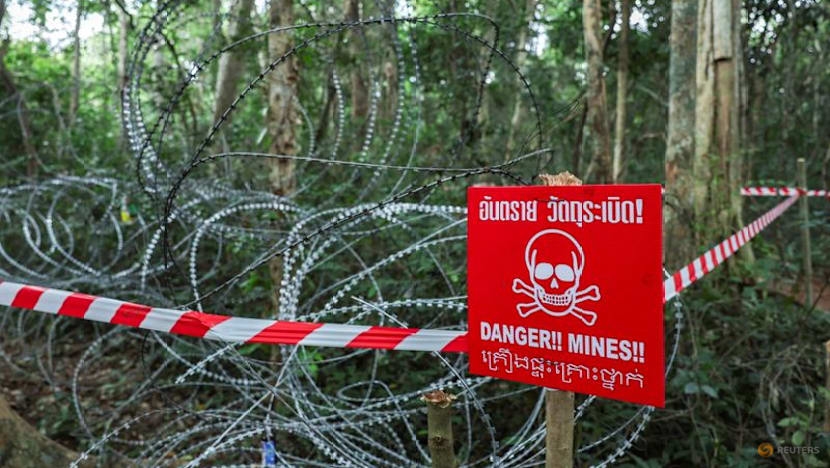

This audio is generated by an AI tool.
BANGKOK: Deployment of riot police, accidental cross-border shooting, accusations of territorial encroachments and escalating bluster from national leaders.
A flurry of actions and war of words of late between Thailand and Cambodia over their border dispute have thrust an existing ceasefire into question, just weeks before regional leaders gather for the 47th Association of Southeast Asian Nations (ASEAN) Summit in Malaysia.
But observers believe the ceasefire – forged at talks in Kuala Lumpur hosted by Malaysia Prime Minister and ASEAN chair Anwar Ibrahim on Jul 28 and in effect from midnight the next day – will continue to hold, because actions by both countries are tied more to domestic politics than direct military confrontation.
The most recent tensions and protests along the border partly reflect local grievances and the revival of nationalist issues, said Dulyapak Preecharush, an associate professor of Asian Studies at Thammasat University in Bangkok.
“From a security standpoint, however, they are not considered serious enough to escalate into major violence,” he said.
“Most of the activities are symbolic and tied to domestic politics rather than a direct move toward military confrontation between the two sides.”
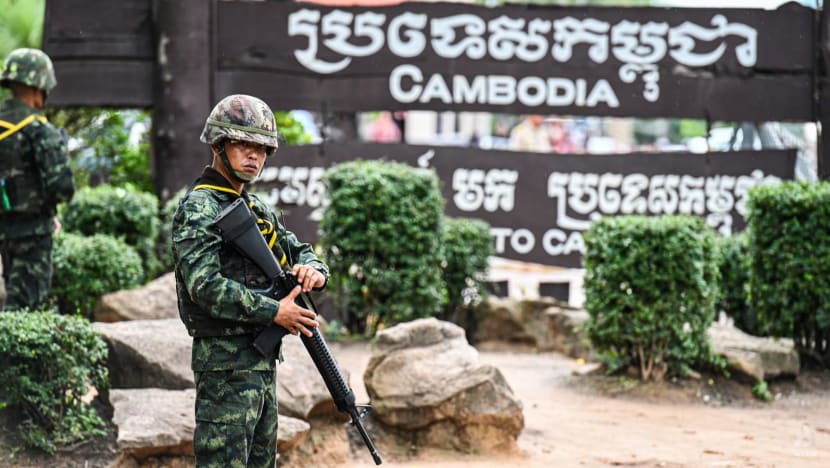
STERNEST TESTS TO COME
In July, heavy fighting broke out between the neighbours - the most serious in years - resulting in the exchange of artillery fire over five days, dozens of deaths and the temporary displacement of about 300,000 people.
For over a century, Thailand and Cambodia have been at odds over sections of their shared border, an area that has never been fully demarcated. Tensions have flared intermittently over the years.
Border checkpoints remain closed, bottlenecking trade, while hundreds of thousands of Cambodian migrant workers in Thailand have returned home, causing a shortage in critical industries that rely on their labour.
A period of quiet ensued before recent developments stirred up concerns again.
On Thursday (Sep 25), Thailand’s new Foreign Minister Sihasak Phuangketkeow called for both sides to scale back military presence along their shared border and de-escalate tensions.
Earlier this week, Thailand had deployed an additional 1,400 police officers from five eastern provinces to Sa Kaeo province to bolster security along the border.
It followed Thai troops firing tear gas and rubber bullets at Cambodian civilians accused of obstructing operations and destroying official property in a disputed border area on Sep 17.
That same day, Cambodian Prime Minister Hun Manet wrote a letter to United Nations Secretary-General Antonio Guterres, accusing Thai forces of forcibly evicting civilians from their "long-settled lands" in villages in Banteay Meanchey province since Aug 12.
Thai forces have also expanded barbed wire, fencing and surveillance, as Cambodia increased its security presence on the border in kind.
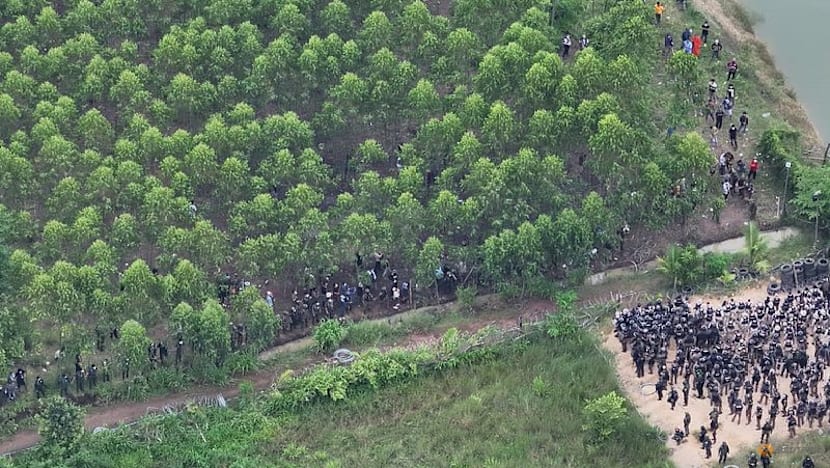
“The two countries have been mobilising their forces, not heavily, but you can see the movement of the soldiers, including some paramilitary on the border, strengthening the positions just in case they have to confront each other again,” said Panitan Wattanayagorn, an independent expert on international relations and security affairs.
But as tensions simmer, analysts say both governments face their sternest tests in weeks to not only maintain the ceasefire before the summit late next month, but also bring a return to normalcy in terms of border operations and bilateral relations.
For Phnom Penh, the ceasefire situation is seen as “very fragile” right now, said Vannarith Chheang, a lecturer in public policy and global affairs at Nanyang Technological University in Singapore.
He said that if Thai authorities push ahead with strict legal measures against Cambodians making what they consider to be illegal border crosses, as proposed from Oct 10 by the governor of Sa Kaeo, “it may trigger another round of conflict”.
So-called Cambodian “encroachers” were ordered by Thai authorities to leave all zones in Sa Kaeo province before the next meeting of the General Border Committee (GBC) next month.
Cambodia’s foreign ministry has strongly pushed back on Thai claims that its citizens were illegally entering foreign soil.
“While both countries have yet to demarcate several segments of the shared border, people on both sides have lived on and cultivated the lands for decades in many un-demarcated areas,” it said in a statement on Sep 25, urging the issue to be addressed at the GBC.
If Cambodian citizens were to be arrested or detained next month and the Cambodian government did not take action, it would face serious issues domestically, Vannarith said.
“I think almost all Cambodians have demanded that the government respond. So far, (the government has) been quite patient and restrained. But the people are not happy,” he said.
RELATIONS “BACK TO SQUARE ONE”
Bilateral relations have been re-shaped by political upheaval in Bangkok.
Thailand is under new leadership following the disqualification of former Prime Minister Paetongtarn Shinawatra in August for violating an ethical code of conduct in her handling of the border dispute.
She had been suspended since July, leaving caretaker leader Phumtham Wechayachai to navigate the bloody conflict and spearhead peace talks with Hun Manet chaired by Malaysia PM Anwar.
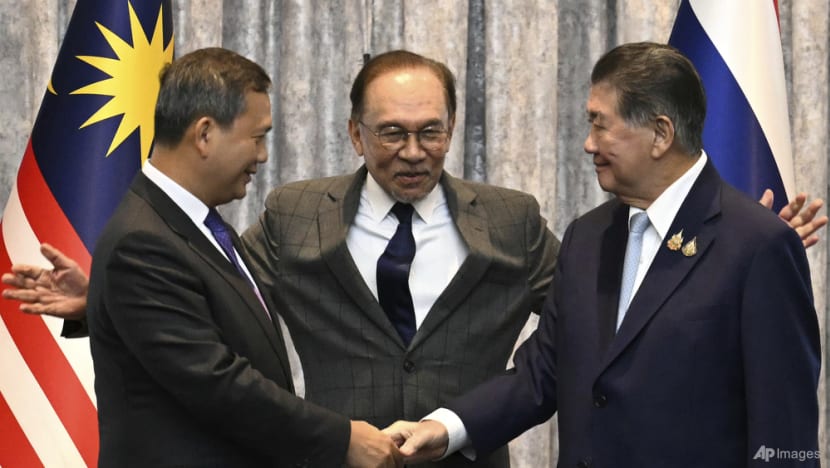
Now, the country’s newly minted prime minister, Anutin Charnvirakul, finds himself facing an immediate international relations test, with just a matter of months to consolidate his own position ahead of a national election expected to be held early next year.
Anutin, a former health and interior minister, lacks experience in dealing with a conflict of such magnitude, said Panitan.
“He's not been tested in this area at all since he began his political career. He's trying to display leadership, but his leadership is untested, and he's being tested now,” he said.
“He may need to accept that we are at war. We are not at peace with Cambodia. Once he understands that we are at war, he will understand the conditions for peace.”
In early September, Hun Manet had congratulated Anutin on his appointment and highlighted in a letter the importance of “peace, harmonious coexistence, and shared prosperity”.
“With our shared commitment to building cordial ties and good cooperation, our two peoples will enjoy prosperity and thrive in harmony and joy,” he wrote.
But the latest comments from both Anutin and former Cambodia PM Hun Sen appear at odds with this sentiment.
Anutin has been visibly campaigning for party members in border areas in recent days and vowing not to open the border, while accusing Cambodia of using “human shields” to provoke Thai troops.
“The border crossings will remain closed, and control measures will be stepped up,” he said at a rally in Si Sa Ket province on Sep 20.
“I won’t be lobbied by anyone. I will serve only Thais and Thailand. There will be no compromise until they accept our conditions.”
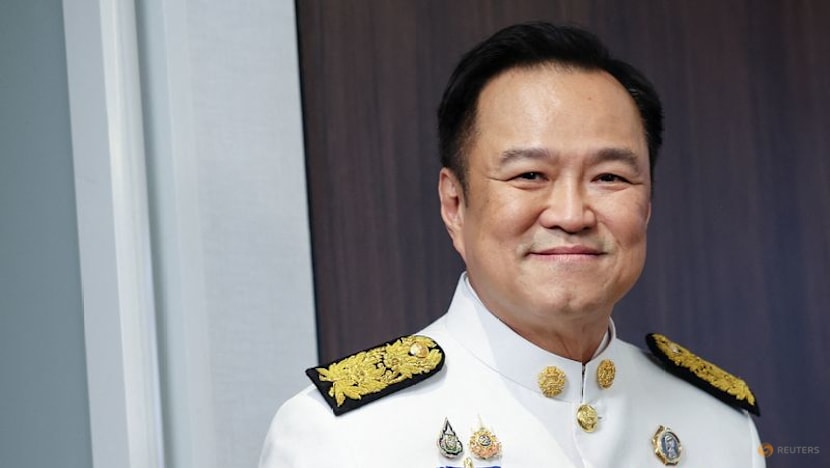
His remarks prompted Hun Sen, now serving as the president of the Cambodian Senate, to wade back in after a period of silence on the issue.
“Cambodia’s stance will not change. Cambodia will not stoop to begging Thailand to reopen the border. Thailand can keep it closed for another 100 years and Cambodia will not perish,” he wrote on Facebook.
Overall, it means relations are “back to square one”, Panitan said, despite some hope that the reset in the Thai government might bring about renewed efforts at a lasting peace.
“And all this happened very quickly,” he said.
The Thai prime minister’s hardline messaging, Panitan believes, will be the starting point of a “clear package” of proposals to eventually ease the conflict.
His time in office will depend on it, he said, in an upcoming election where peace with Cambodia could be a major factor in the minds of voters.
Within the next three to four months, his goals should be to de-escalate the border situation, stand down major military hardware on both sides, look to commence de-mining and start to consider the reopening of border checkpoints.
Playing resolutely may help him consolidate his new government, but it risks closing space for compromise, Panitan said.
“For him, it's much more critical in terms of political survival, as compared to Hun Sen and Hun Manet. And they know it. They know that timing is more critical for Anutin,” he said, adding that the Thai PM will not be able to ignore the deepening impacts on the economy.
Before the conflict began, over 520,000 Cambodians worked in Thailand, accounting for 12 per cent of the country's foreign workforce, according to official data.
A joint report by the International Labour Organization (ILO) and Organisation for Economic Cooperation and Development from 2017 estimated that migrant workers contributed 4.3 to 6.6 per cent of Thailand’s gross domestic product.
Vannarith said Thailand’s “economic coercion measures” like keeping the borders closed have largely not been effective; Cambodia has been better able to manage supply chains and boost local production in response.
According to Cambodia’s General Department of Customs and Excise, Cambodia’s exports to Thailand declined about 6.4 per cent in the first eight months of 2025 compared to the same period last year, while imports from Thailand dropped 4.1 per cent.
That leaves open the risk of a more protracted crisis, Vannarith said, with Phnom Penh more comfortable about its ability to play the long game than it might have during past conflicts.
“The game is still on when it comes to bilateral negotiations, but I think Cambodia this time is much more confident than in 2008 that they can survive without having the border open with Thailand.”
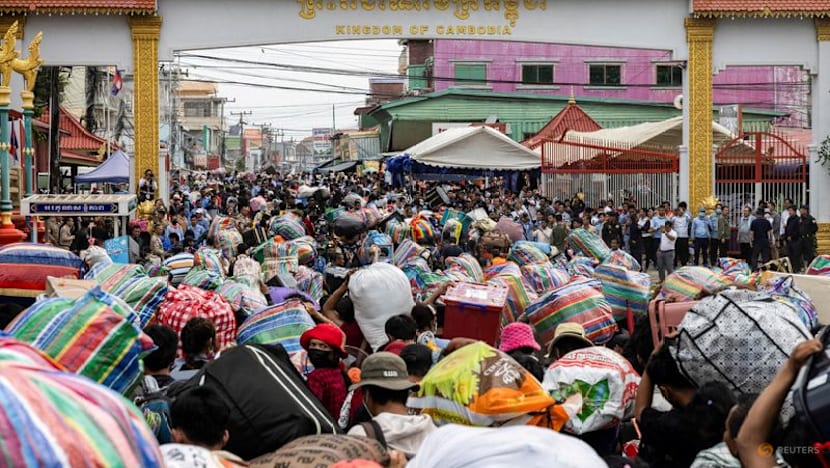
ESCALATION UNLIKELY BEFORE ASEAN SUMMIT, OBSERVERS SAY
Analysts agree a larger conflagration would be unlikely before the ASEAN Summit; both sides have the incentive to avoid embarrassment or be seen as the reason for a breakdown in front of regional peers and global observers.
“Neither Thailand nor Cambodia has a strategic incentive to return to direct military confrontation,” Dulyapak of Thammasat University said.
Malaysia, the ASEAN chair, has been central to managing the conflict so far.
Yet despite the handshakes and smiles seen in Putrajaya at the advent of the ceasefire in late July, there are cracks growing in Anwar’s ability to effectively broker the situation, Panitan said.
He said the Thai government had been passive to date in its approach to the conflict so far and been outflanked by a more assertive Cambodian administration, particularly on the global and regional diplomatic stage.
Within Thai circles, he said he has observed an erosion of trust in Malaysia to act as an effective negotiator in this case, and perceptions that ASEAN as a bloc could not facilitate peace easily.
“Not only can it not prevent the war. Now it looks like it cannot resolve the conflict,” he said.
Vannarith disagreed, saying “Malaysia has been very, very neutral and very honest in terms of brokering this”.
He urged Malaysia to bring in American and Chinese observers to add weight to the need for both sides to negotiate earnestly.
During ceasefire talks in July, the US Department of State announced that its officials were on the ground in Malaysia to assist peace efforts between Thailand and Cambodia. US President Donald Trump called for the fighting to stop and suggested trade negotiations could be delayed if the violence continued.
China also held informal talks in Shanghai in late July with representatives of both countries to secure a commitment from both sides to abide by the truce.
“I think diplomatic pressure can work on both sides to avoid any action that may escalate the tension,” he said.

















